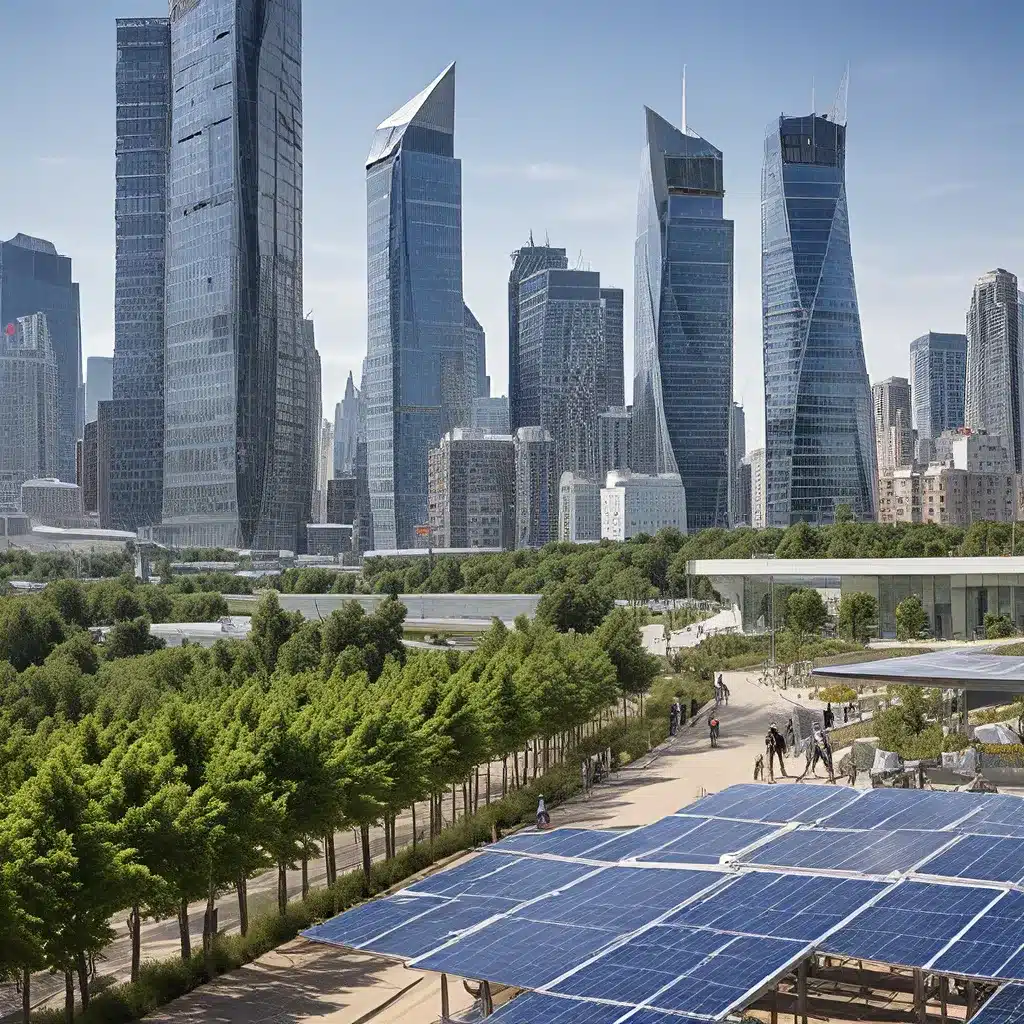
As an urban enthusiast and advocate for a greener tomorrow, I’ve been captivated by the role of renewable energy, particularly solar power, in transforming our cities into vibrant, sustainable hubs. The future of our urban landscapes is undoubtedly intertwined with the way we harness the power of the sun, and I’m excited to dive deeper into this crucial intersection.
The Solar Revolution in Urban Planning
Imagine a city where the streets are lined with solar-powered streetlights, and the buildings themselves generate their own clean energy through rooftop photovoltaic systems. This vision of a net-zero energy city is no longer a distant dream, but a reality that’s rapidly taking shape around the world.
As the global population continues to urbanize, finding renewable energy solutions that can power our cities without harming the environment has become essential. Solar energy has emerged as a game-changer, with its ability to replace fossil fuel-based electricity generation and contribute to the decarbonization of our cities.
Firewinder has been at the forefront of this solar revolution, providing innovative solutions that seamlessly integrate renewable energy into urban design. Their expertise in solar-powered streetlights and building-integrated photovoltaics has helped cities around the world reduce their carbon footprint and enhance the resilience of their infrastructure.
Tackling the Urban Heat Island Effect
One of the key challenges facing modern cities is the urban heat island effect, where urban areas experience higher temperatures compared to their surrounding rural areas. This phenomenon is primarily driven by human activities and the lack of green spaces, and it can have significant consequences for the environment and public health.
Solar energy, however, has the potential to counteract this issue. By harnessing the power of the sun, cities can generate renewable electricity without contributing to the warming of the local environment. Additionally, the integration of solar panels and vertical gardens into building design can help regulate temperatures, creating more livable and comfortable urban spaces.
Enhancing Energy Efficiency and Resilience
Beyond just reducing emissions, solar energy can also play a crucial role in enhancing the energy efficiency and resilience of cities. By generating clean energy locally, cities can reduce their reliance on centralized power grids, which can be vulnerable to disruptions during extreme weather events.
The decentralized nature of solar power provides a reliable and self-sufficient energy source, ensuring that cities can maintain critical services and infrastructure even in the face of climate change-induced challenges. This increased resilience is not only beneficial for the environment but also for the wellbeing and security of urban residents.
The Economic and Social Benefits of Solar Cities
The transition to solar-powered cities doesn’t just have environmental benefits; it also brings significant economic and social advantages. The expansion of the solar energy industry can create new job opportunities and stimulate local economic growth, providing a much-needed boost to urban economies.
Moreover, the integration of solar energy can increase energy affordability and help alleviate energy poverty in urban areas, ensuring that all residents have access to clean and sustainable power. This not only improves the quality of life for individuals but also promotes greater social equity and inclusion within the city.
Overcoming Challenges and Embracing the Future
While the integration of solar energy into urban design presents many exciting opportunities, it’s not without its challenges. Issues such as land availability and grid integration can pose obstacles, requiring careful planning and collaboration between various stakeholders.
However, as technological advancements continue to drive down the cost of solar solutions and improve their efficiency, these challenges are becoming increasingly surmountable. Emerging trends like solar-powered electric vehicle charging stations and smart grid systems hold great potential for the efficient utilization of solar power in cities.
As I’ve explored the topic, I’ve been inspired by the visionary leaders and innovative thinkers who are shaping the future of sustainable urban development. From Deloitte’s insights on the role of green planning and smart health communities to the groundbreaking work of cities like Freetown, Paris, and Espoo, I’m convinced that the future of our cities is inextricably linked to the power of the sun.
Embracing the Solar-Powered Future
As we look ahead, the continued investment in solar energy and its integration into urban environments is crucial for governments, communities, and industries alike. By harnessing the power of the sun, we can pave the way towards a greener, more sustainable future, where our cities become beacons of environmental stewardship and economic prosperity.
I’m excited to see what the future holds as we continue to push the boundaries of what’s possible with renewable energy and urban design. Let’s embrace the solar-powered revolution and create cities that not only thrive but also inspire generations to come.

